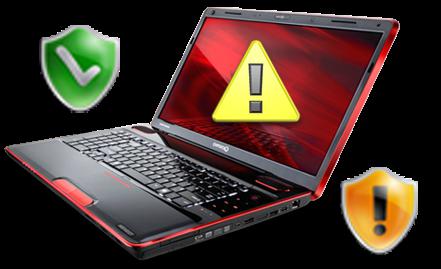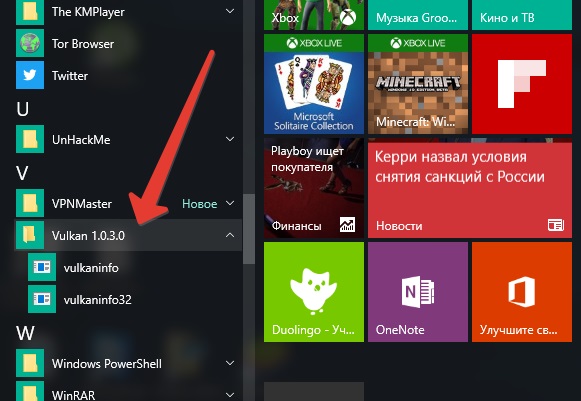Что такое компьютерный вирус и как уберечь компьютер от поражения?
Содержание:
Computer virus examples
Sometimes to understand what something is, we have to examine what it isn’t. Keeping that in mind, let’s play: Is It a Virus?
In the Is It a Virus game we’re going to take a look at examples of things people on the Internet commonly believe to be a virus and explain why it is or isn’t. What fun!
Is a worm a virus? Worms are not viruses, though the terms are sometimes used interchangeably. Even worse, the terms are sometimes used together in a strange and contradictory word salad; i.e. a “worm virus malware.” It’s either a worm or a virus, but it can’t be both, because worms and viruses refer to two similar but different threats. As mentioned earlier, a virus needs a host system to replicate and some sort of action from a user to spread from one system to the next. A worm, conversely, doesn’t need a host system and is capable of spreading across a network and any systems connected to the network without user action. Once on a system, worms are known to drop malware (often ransomware) or open a backdoor.
Is ransomware a virus? Ransomware can be a virus. Does the virus prevent victims from accessing their system or personal files and demands ransom payment in order to regain access à la ransomware? If so, then it’s a ransomware virus. In fact, the very first ransomware was a virus (more on that later). Nowadays, most ransomware comes as a result of computer worm, capable of spreading from one system to the next and across networks without user action (e.g. WannaCry).
Is a rootkit a virus? Rootkits are not viruses. A rootkit is a software package designed to give attackers “root” access or admin access to a given system. Crucially, rootkits cannot self-replicate and don’t spread across systems.
Is a software bug a virus? Software bugs are not viruses. Even though we sometimes refer to a biological virus as a “bug” (e.g. “I caught a stomach bug”), software bugs and viruses are not the same thing. A software bug refers to a flaw or mistake in the computer code that a given software program is made up of. Software bugs can cause programs to behave in ways the software manufacturer never intended. The Y2K bug famously caused programs to display the wrong date, because the programs could only manage dates through the year 1999. After 1999 the year rolled over like the odometer on an old car to 1900. While the Y2K bug was relatively harmless, some software bugs can pose a serious threat to consumers. Cybercriminals can take advantage of bugs in order to gain unauthorized access to a system for the purposes of dropping malware, stealing private information, or opening up a backdoor. This is known as an exploit.
What is a computer virus?
As defined by Malwarebytes Labs, a computer virus is “malware attached to another program (such as a document), which can replicate and spread after an initial execution on a target system where human interaction is required. Many viruses are harmful and can destroy data, slow down system resources, and log keystrokes.”
Most computer viruses target systems running Microsoft Windows. Macs, on the other hand, enjoy a reputation as virus-proof super machines. In reality, Macs are not inherently safer. There are more Windows users in the world than Mac users and cybercriminals simply choose to write viruses for the operating system (OS) with the largest amount of potential victims.
Whatever OS you choose, Windows or Mac, don’t worry too much, because viruses just aren’t a thing anymore. That may sound odd coming from a cybersecurity company but hear us out.
Cybercriminals aren’t creating new viruses, instead they are focusing their efforts on more sophisticated and lucrative threats. When people talk about “getting a virus” on their computer, they usually mean some form of malware—often a computer worm.
The terms “virus” and “malware” are often used interchangeably, but they’re not the same thing. While a computer virus is a type of malware, not all malware are computer viruses.
“Cybercriminals aren’t creating new viruses, instead they are focusing their efforts on more sophisticated and lucrative threats. When people talk about “getting a virus” on their computer, they usually mean some form of malware—often a computer worm.”
The easiest way to differentiate computer viruses from other forms of malware is to think about viruses in biological terms. Take the flu virus, for example. The flu requires some kind of interaction between two people—like a hand shake, a kiss, or touching something an infected person touched. Once the flu virus gets inside a person’s system it attaches to healthy human cells, using those cells to create more viral cells.
A computer virus works in much the same way:
- A computer virus requires a host program.
- A computer virus requires user action to transmit from one system to another.
- A computer virus attaches bits of its own malicious code to other files or replaces files outright with copies of itself.
It’s that second virus trait that tends to confuse people. Viruses can’t spread without some sort of action from a user, like opening up an infected Word document. Worms, on the other hand, are able to spread across systems and networks on their own, making them much more prevalent and dangerous.
Famously, the 2017 WannaCry ransomware worm spread around the world, took down thousands of Windows systems, and raked in an appreciable amount of untraceable Bitcoin ransom payments for the alleged North Korean attackers.
Computer viruses don’t capture headlines like that—at least not anymore.
To recap, the bad guys aren’t focused on creating new viruses and most of the really bad stuff is actually malware. Should we still take computer viruses seriously? Definitely, yes.
Continuing the virus analogy, if a given population stops receiving vaccinations for diseases thought to be eradicated, like the measles and polio, those diseases can and do come back. Likewise, it’s important to be proactive about cybersecurity and take some basic protective measures against computer viruses. Otherwise, computer viruses could make a comeback.
With that said, let’s take a look at computer viruses under the microscope.
Классификация компьютерных вирусов
WannaCry – самый известный компьютерный вирус
киберпреступники
Основные виды и типы компьютерных вирусов
Основные виды, типы и признаки компьютерных вирусов
- Заражение загрузочного сектора – алгоритм вируса устанавливает управление над процессом запуска ПК и загрузки операционной системы. Причиной появления такой проблемы становится подключение зараженного флэш-накопителя.
- Вредоносные web-страницы – этот вид компьютерного вируса активируется в момент, когда пользователь открывает определенный сайт.
- Заражение браузера – воздействие осуществляется на его конкретные функции, поэтому открывается большое количество вкладок с неизвестными сайтами, на которые пользователь не планировал переходить.
- Резидентный – это термин общего значения, который можно применить практически к каждому вирусу который располагается в оперативной памяти ПК. Активация происходит в момент запуска операционный системы.
- Вирус прямого действия – первые признаки заражения компьютера появляются, когда пользователь запускает вредоносный файл. Техника будет продолжать корректно работать до момента использования зараженного элемента.
- Полиморфный вид компьютерного вируса – изменение кода происходит при каждом запуске зараженного файла, поэтому защитный софт его не определяет.
- Файловый – еще один распространенный вид вирусов. Такие коды находятся внутри исполняемых файлов, активация которых позволяет выполнять конкретные функции или операции в системе.
- Многосторонний – заражение и последующее распространение вируса может происходить несколькими способами. Под угрозу попадают не только программные файлы, но и секторы операционной системы.
- Макровирус – они написаны на том же языке, что и обычные программные приложения. Распространение также происходит при активации вредоносного файла. Довольно часто он является вложением в электронном письме.
How do I prevent computer viruses?
Preventing computer viruses from infecting your computer starts with situational awareness.
“Situational awareness is something law enforcement and militaries have practiced for decades. It refers to a police officer or a soldier’s ability to perceive threats and make the best decision possible in a potentially stressful situation,” said Malwarebytes Head of Security, John Donovan.
“As it applies to cybersecurity, situational awareness is your first line of defense against cyberthreats. By staying on the lookout for phishing attacks and avoiding suspicious links and attachments, consumers can largely avoid most malware threats.”
Next, invest in good cybersecurity software. We’ve made a distinction between computer viruses and malware, which now begs the question, “Do I need antivirus software or anti-malware software?” We’ve covered this topic before in great detail so checkout our article on antivirus vs. anti-malware. For now, though, here’s a quick gloss on the subject.
Antivirus (AV) refers to early forms of cybersecurity software focused on stopping computer viruses. Just viruses. Anti-malware refers to all-encompassing threat protection designed to stop old-fashioned viruses as well as today’s malware threats. Given a choice between traditional AV with limited threat detection technology and modern anti-malware with all the bells and whistles, invest in anti-malware and rest easy at night.
As mentioned previously in this piece, traditional AV solutions rely on signature-based detection. AV scans your computer and compares each and every file against a database of known viruses that functions a lot like a criminal database. If there’s a signature match, the malicious file is thrown into virus jail before it can cause any damage.
The problem with signature-based detection is that it can’t stop what’s known as a zero-day virus; that is, a virus that cybersecurity researchers have never seen before and for which there is no criminal profile. Until the zero-day virus is added to the database, traditional AV can’t detect it.
Malwarebytes’ Multi-Vector Protection, conversely, combines several forms of threat detection technology into one malware crushing machine. Amongst these many layers of protection, Malwarebytes uses what’s called heuristic analysis to look for telltale malicious behavior from any given program. If it looks like a virus and behaves like a virus, then it’s probably a virus.
Виды компьютерных вирусов
Существуют вирусы, созданные с целью позабавиться, которые могут заставить курсор бегать по вашему экрану или вывести какую-нибудь пошлую картинку на экране, но все это не приносит вреда, только раздражает. Другое дело специальные программы, созданные с целью похищения денег, личной информации или полным её уничтожением.
Существует «почти» официальная классификация, которая подскажет какие бывают вирусы и, для наглядности, разделяет их:
Эта классификация позволяет, более-менее, все разложить по полочкам, однако она далеко не идеальна. Сегодня существует огромное количество неизвестных вирусов, создаваемых каждый день и функциональность их постоянно меняется. Поэтому не получится создать точное разделение в этой области.
В среде огромного количества программ способных заразить ваш ПК существуют такие о которых слышал чуть ли не каждый пользователь интернета, такие как:
- Червь — скорее всего, самый известный компьютерный вирус, так же известный как червь Мориса, родоначальник сетевых червей, который привел к массовому сбою более 6000 компьютеров в США и подаривший своему создателю первую в мире судимость за компьютерные преступления. Нынешние потомки, в большинстве своем, просто захламляют компьютер путем бесконечного размножения и замедляют его работу.
- Троянские программы — занимают вторую строчку в хит-параде вредоносных созданий. В отличие от червей, которые размножаются произвольно, трояны распространяются людьми. В основном используются для похищения или уничтожения информации. Их сложность можно определить по уровню маскировки программы.
Это самые известные вредоносные программы (алгоритмы), которые принесли много вреда и от которых придумали большое количество средств защиты. Однако это далеко не все существующие и известные на сегодняшний день! Для полноты статьи приведу более полный список известных вредоносных программ:
Их много и это плохо… Но мы ведь еще со школы помним, что действие вызывает противодействие и в этом случае добрые люди создали средства защиты, давайте о них поговорим. Правда сначала рекомендую посмотреть вот этот документальный фильм для общего развития в этой теме:
Лучшие поисковики по торрент файлам. Где найти торрент?
https://youtube.com/watch?v=ffHYiu0Lsng
Компьютерные вирусы и защита от них
В интернете много опасностей, но они нам не страшны, если мы будем делать все осмысленно и разумно. Для начала основные моменты:
- Поставить себе хороший антивирус от известной компании с автообновлениями.
- Пользоваться только проверенными программами от известных компаний (разумеется за хорошие деньги).
- Не стоит давать всем подряд свою флэшку или переносной жесткий диск.
В большинстве случаев этого хватит навсегда. Правда дополнительные меры защиты не помешают:
- Пользуйтесь компьютером только с правами пользователя, если не знаете как правильно работать с компьютером будучи администратором.
- Не открывайте и, желательно, не скачивайте файлы с неизвестных ресурсов.
- Делайте резервные копии важных файлов, на случай если вдруг вас все-таки найдет вирус.
How do I remove computer viruses?
Going back to our virus analogy one final time—removing a virus from your body requires a healthy immune system. Same for your computer. A good anti-malware program is like having a healthy immune system. As your immune system moves through your body looking for and killing off invading viral cells, anti-malware scans for files and malicious code that don’t belong on your system and gets rid of them.
The free version of Malwarebytes is a good place to start if you know or suspect your computer has a virus. Available for Windows and Mac, the free version of Malwarebytes will scan for malware infections and clean them up after the fact. Get a free premium trial of Malwarebytes for Windows or Malwarebytes for Mac to stop infections before they start.







